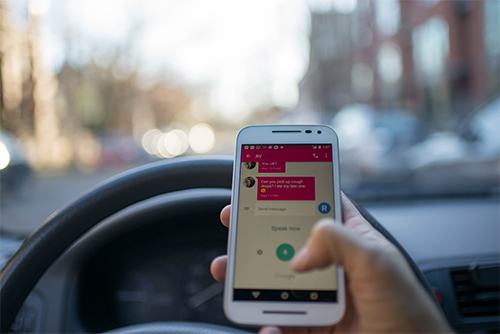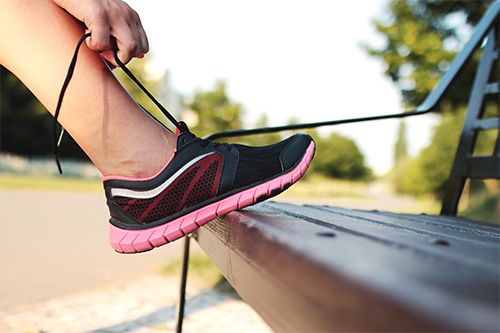Knowing that something is bad or good for you is one thing. Actually doing or not doing it is another. Chances are you’re aware of some bad habits you really need to kick, and some healthy ones you should finally start adopting. We’re here to tell you the time is now.
“Small changes can prevent a lot of chronic health care issues down the road,” says Dr. Monica Fudala, Family Medicine at NorthShore University HealthSystem.
So what are you waiting for? Stop those bad habits and pick up the good ones — today!
The Bad
We know you know these are bad for you. Now it’s time to quit them once and for all.
1. Stop cleaning out your ears with cotton swabs

While most people know that you shouldn’t stick items in your ears and that you shouldn’t use cotton swabs to clean your ear out, many people continue to do it.
“It’s a hard habit to break, but it can cause numerous problems,” Fudala says. Swabbing your ears can lead to puncturing tympanic membrane or scratching the inner surface of the inner ear, which can lead to an infection. It can also impact the wax, causing pain and requiring a physician to flush it out.
How to make the change: If you’re tempted to clean out your ears, remember that some wax is a good thing, as it protects the ear. If you do have some wax, Fudala suggests using the corner edge of a clean towel to wipe around the outside of the ear. If you have excess wax, see a physician who can remove it safely.
2. Give your eyes a rest

Not only does the body need rest at night, but your eyes need rest during the day, especially after looking at screens.
“Adults spend an inordinate amount of time on devices,” says Dr. Christine Allison, OD, FAAO, FCOVD, a professor at the Illinois College of Optometry and president of the Illinois Optometric Association. She adds, “This can lead to overaccommodation of the eyes, convergence and divergence problems, and dry eye syndrome.”
How to make the change: Allison recommends following the 20-20-20 rule. For every 20 minutes spent on a device, look 20 feet away, for 20 seconds to give your eyes a rest. Set an alarm on your phone or computer to remind you.
“This should keep [your eyes] more comfortable and allow them to work more efficiently throughout the day,” Allison says.
3. Avoid drinking your calories
Another small change with big impact is staying away from sweetened beverages. This can be tough if you love soda or cheer the arrival of pumpkin spice latte season, but the calories in sugary drinks add up — and quickly. Fudala says that her patients often lose weight after eliminating those from their routine.
How to make the change: If it’s soda you love, Andrea O’Donnell, RDN, CNSC, LDN, a dietitian nutritionist at Individual and Family Connection, suggests reaching for a different fizzy beverage in a can. She is a big fan of sparkling water and is currently loving La Croix. “With flavors like grapefruit, tangerine and pear, just to name a few, you’ll never miss the soda or the calories that come with it,” she says.
4. Stop using your phone while driving

You’ve heard it before, but it bears repeating: Don’t text and drive. A full 95 percent of people disapprove of distracted driving, but 71 percent of people still use their phone behind the wheel, according to the It Can Wait campaign. Moreover, the campaign’s research shows texting drivers are 23 times more likely to be in an accident.
“It’s a horrible habit. You can die. Your loved ones can die. Other people that are affected by what you’re doing can also die. Literally, there’s no text worth dying for,” says President of AT&T Illinois Paul La Schiazza.
How to make the change: Make the It Can Wait pledge. “Research shows that people who take the pledge actually do less texting and driving. It’s an incredibly powerful thing to take a pledge,” La Schiazza says.
He also suggests using technology to turn off visual and audio notifications on your phone so you aren’t tempted to respond. The iPhone iOS 11 update includes driving mode and there are also apps, such as the free AT&T Drive Mode app, available for all devices.
Finally, be sure to set a good example for your kids by not texting and driving. Instill good habits in the next generation of drivers. “We all have a responsibility to educate our kids on how to drive, and we know kids model their parents’ behavior. It’s really hypocritical if a parent is texting and driving and helping a teenager try to get a permit,” La Schiazza says.
The Good
We KNOW you know you should be doing these. It’s the start of a new school year. Commit to adopting these healthy habits. Your body will thank you!
1. Create and stick with a sleep routine
Tired? You’re certainly not alone. According to a recent study by the National Center for Health Statistics, more than one in three middle-aged women reported getting fewer than seven hours of sleep per night, on average.
“You can’t really catch up on sleep. You need to get a sufficient amount every day, which is why it’s important to stick to a regular sleep schedule,” says Fudala, who tells her patients to aim for eight hours of sleep per night.
Getting into a good sleep routine will not only make you feel more rested, but it could also improve your health. Lack of sleep has been tied to an increased risk of stroke and heart attack, according to the National Sleep Foundation. Fudala notes that getting sufficient sleep also has a positive impact on both your memory and your mood.
How to make the change: Pick a time to go to sleep and awake every day and be consistent, suggests the National Sleep Foundation. Don’t expect to make a big shift all at once, though. Adjust your schedule in 15-minute increments every few days to get to the schedule you want. Also, avoid electronic screens and sources of blue light in the hour before bed.
2. Exercise every day

The American Heart Association recommends 150 minutes of moderate exercise every week, and suggests people aim for 30 minutes per day, five days a week. “Living a sedentary lifestyle can lead to serious health conditions — heart attack, stroke, obesity,” cautions Fudala.
How to make the change: Break it down into smaller increments. Fudala says that the half an hour per day doesn’t have to be accomplished all at once and suggests less time-intensive efforts, like a 10-minute walk during lunch, parking the car farther away and taking the stairs instead of the elevator. “These can all add up over the course of a day,” she says.
3. Slow down when eating and take a mealtime “time out”
“We get in the habit of quickly eating our meals so we can scurry off to the day’s next task and we often tune out our bodies’ fullness cues,” explains O’Donnell. However, rushing through mealtime is not the best approach as it can mask your body’s fullness cues.
How to make the change: O’Donnell says taking a mealtime “time out” 10 to 15 minutes into a meal can give you time to feel your body’s fullness. Pause for a couple of deep breaths, a conversation with whomever you are eating with, and ask yourself how you are feeling. “This doesn’t mean you have to stop eating, but it may tell you that you are nearing fullness or perhaps that you are still quite hungry,” she explains.
4. Start cleaning out your contact lens case
When was the last time you cleaned your contact case? And do you replace your case every three to six months as recommended by the CDC?
“Remember, you are storing a medical device that you place into your eyes daily. You want to prevent harm and infection to your eyes, so it is a must that your cases stay clean,” Allison says.
“Most of my female patients are good about changing out their eye makeup and mascara regularly, but never think to clean their cases,” she adds.
How to make the change: “The best way to care for your cases is to rinse them with the same disinfecting solution that you use to clean your lenses, then let the case air-dry face down,” Allison says. Contact lens cases cost just a couple dollars. Stock up on several and put reminders in your calendar to change them at the start of every quarter. It’s also a good idea to change your mascara and eye makeup at the same time.

Shannan Younger is a writer living in the western suburbs of Chicago with her husband and teen daughter. Originally from Ohio, she received her undergraduate and law degrees from the University of Notre Dame. Her essays have been published in several anthologies and her work has been featured on a wide range of websites, from the Erma Bombeck Humor Writers Workshopto the BBC. She also blogs about parenting at Between Us Parents.
Shannan is the Illinois Champion Leader for Shot@Life, a campaign of the United Nations Foundation that supports vaccination efforts in developing countries to ensure life-saving vaccines reach the hardest to reach children. “Vaccines are one of the most effective ways to save the lives of children in developing countries and I’d love nothing more than to see diseases eradicated,” Shannan says. “We are so close to getting rid of polio for good!”

